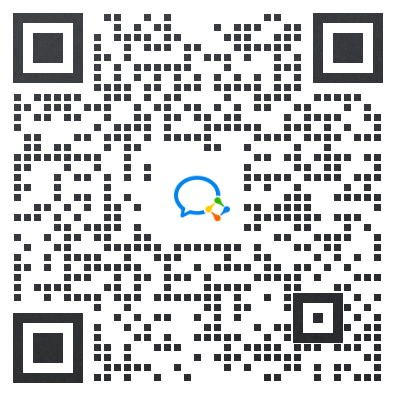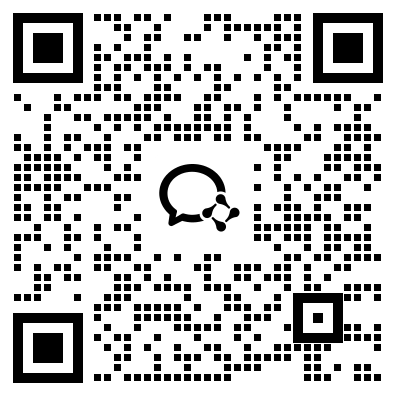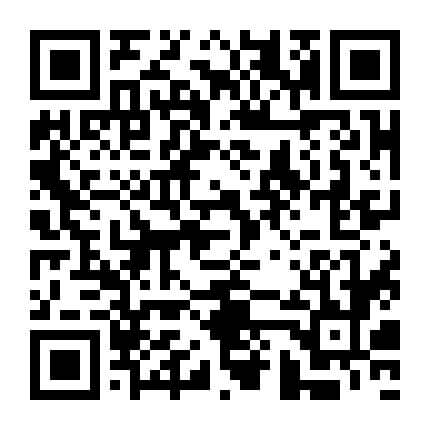考研201英语(一)在线题库每日一练(四百一十四)
摘要:以下是希赛网给大家分享考研201英语(一)在线题库每日一练,希望通过刷题可以帮助大家巩固重要知识点,对知识点查漏补缺,祝愿大家能顺利通过考试!
本文提供考研201英语(一)在线题库每日一练,以下为具体内容
1、Public health emergencies are a fact of life in a world as interconnected as ours. The idea behind an emergency fund is not to displace efforts to combat infectious disease but to ramp them up to meet a crushing temporary need. During an outbreak the CDC (Centers for Disease Control) can call on many doctors and nurses to work without pay, but the costs of transportation, medical supplies and protective equipment still have to be covered. The surge in patients typically increases the need for laboratory testing or surveillance of insects, rodents or other carriers of illness—extra requirements that can be met by short-term contracts with commercial companies.Thomas Frieden, former director of the CDC, estimates that 90 percent of the Ebola deaths that occurred in West Africa in 2014 and 2015 could have been prevented if the agency had been able to unleash a massive effort right away. In July 2014 he estimates that an additional 300 beds to treat Ebola patients would have been enough to stop the illness from spreading. But July was also approaching the end of the fiscal year for the U.S. government, and there was not enough flexibility in the CDC’s budget to finance the necessary response. By November, after Congress made further money available, more than 3,000 beds were needed to treat everyone who had become sick.When Zika hit the southern U.S. and Puerto Rico in 2016, health officials had to go back to Congress to ask for funds for the new emergency. Months went by without action as some legislators wrangled over the role Planned Parenthood might play in the endeavor, among other things, local health officials reportedly put other critical programs on hold to deal with the new threat.Legislators from both the Democratic and Republican parties have recognized the problem and are trying to do something about it. Senator Bill Cassidy of Louisiana, a Republican, introduced the Public Health Emergency Response and Accountability Act last year and again in January 2017 to create a more robust national health emergency fund that would tie current funding to amounts spent on previous public health emergencies. In 2016 Representative Rosa DeLauro of Connecticut, a Democrat, called for a one-time appropriation of $5 billion for emergency health and is planning to do so again this year. But introducing legislation (or making a vague promise in the president’s budget) does not help if Congress fails to pass it. Lawmakers need to follow through by approving one or both of the proposed measures for the president to sign to ensure that the money will be there when the next public health emergency strikes.1.According to the first paragraph, what can a health emergency fund help?2.The word “surveillance” (Line 6, Paragraph 1) is closest in meaning to____.3.Which of the following is true about Ebola in West Africa?4.We may infer from the third paragraph that____.5.Which of the following would be the best title of the text?
问题1
A、Distribute the endeavors to fight against epidemics.
B、Transport medical supplies and protective equipment.
C、Increase the efforts to satisfy the health emergency need.
D、Make experiments on the carriers of contagious diseases.
问题2
A、supporting
B、monitoring
C、surrounding
D、questioning
问题3
A、It spread more quickly than people had expected.
B、It caused less deaths than people had estimated.
C、It obtained more money than people had budgeted.
D、It needed more financial support than people had thought.
问题4
A、Zika attacked at least two places around the whole globe at first
B、officials in local area sought for money from World Health Organization
C、Planned Parenthood might play an important role in combating Zika
D、legislators postponed other significant programs to tackle Zika
问题5
A、The Necessity of a Public Health Emergency Fund
B、The Attacks from Epidemics to Health Emergency
C、The Public Health Emergency Response and Accountability Act
D、The Way to Deal with the Great Threats to the Public Health
2、For a century, urban commotion has been treated as a moral failing of individuals. Fixing it will require systemic changes to environmental noise.What are your ears hearing right now? Maybe the bustling sounds of a busy office, or your partner cooking dinner in the next room. Whatever the texture of the sonic landscape of your life may be, beneath it all is the same omnipresent din: the sound of cars.That might seem benign, or perhaps even endearing—the sound of the bustle of the big city. But the din of vehicles, along with transit and industrial activity, is making people sick. People forget that noise pollution is still pollution. And noise pollution is everywhere.Unlike many other injuries, hearing damage is irreparable. It also functions differently. People tend to assume that hearing loss is akin to turning down the volume in one’s head—that everything just sounds quieter. But it’s more complex than that. Sound at certain frequencies just vanishes—birdsong, intelligible human speech, the gentle rustling of leaves, the crispy highs of brushes on jazz cymbals. People can avoid using earbuds excessively or attending loud concerts. But people do not necessarily have the ability to avoid high levels of environmental noise—it’s in their neighborhoods, near their schools, at their workplaces. That makes noise pollution a matter of bodily autonomy.Solving the environmental-noise problem has been difficult, partly because for more than a century anti-noise advocates have fought for the right to silence rather than the right to hear.Concerns about hearing loss largely focus on excessive noise exposure. But environmental noise is just as unsafe. People living in cities are regularly exposed (against their will) to noise above 85 decibels from sources like traffic, subways, industrial activity, and airports. That’s enough to cause significant hearing loss over time. If you have an hour- long commute at such sound levels, your hearing has probably already been affected. Urban life also sustains average background noise levels of 60 decibels, which is loud enough to raise ones blood pressure and heart rate, and cause stress, loss of concentration, and loss of sleep. Sirens are a particularly extreme example of the kind of noise inflicted on people every day: They ring at a sound-pressure level of 120 decibels—a level that corresponds with the human pain threshold, according to the World Health Organization.But since the turn of the 20th century, protecting human hearing has taken a back seat to securing quiet for those with means, and punishing those without. Noise-abatement laws transformed an objective concern about environmental and health conditions into a subjective fight over aesthetic moralism.1.According to the first paragraph, urban commotion is not related to____.2.The word “din” (Line 3, Paragraph 2 and Line 2, Paragraph 3) is closest in meaning to____.3.Which of the following is true of the hearing damage?4.We may infer from the sixth paragraph that____.5.What does the first sentence in the last paragraph mean?
问题1
A、personal moral breakdown
B、individual emotional state
C、city’s or town’s noise pollution
D、one’s clamorous surroundings
问题2
A、a main meal of the day served in the evening or at midday
B、a room that is comfortable and secluded
C、a very loud and unpleasant noise that lasts for some time
D、a small buoy used as a marker at sea
问题3
A、It can be repaired or made better.
B、It performs the same function.
C、It makes everything sound quieter.
D、It is caused by over-exposure to noise.
问题4
A、noise exerts its hazardous influence on people in cities and towns
B、noise above 85 decibels causes significant hearing loss over time
C、noise levels of 60 decibels raise one’s blood pressure and heart rate
D、sirens at the level of 120 decibels meet with the human pain threshold
问题5
A、Protecting human hearing used to be of priority in the past.
B、Obtaining quiet environment was once the first consideration.
C、Both safeguarding hearing and securing quiet are significant.
D、Neither protecting hearing nor acquiring quiet is of importance.
3、bulk
A、 adj. 性感的,妩媚的,英俊的,诱人的;吸引人的,令人愉快的;有吸引力的
B、 v. 使某物加大(或加厚、加重);n. 预算,主体,大部分;体积,大(量);巨大的体重
C、 n. 观众,听众;读者;会见,觐见,进见
D、 adj. 声音的;录音的
4、The idea that plants have some degree of consciousness first took root in the early 2000s; the term“plant neurobiology” was 1 around the notion that some aspects of plant behavior could be 2 to intelligence in animals. 3 plants lack brains,the firing of electrical signals in their stems and leaves nonetheless triggered responses that 4 consciousness, researchers previously reported. But such an idea is untrue, according to a new opinion article. Plant biology is complex and fascinating, but it 5 so greatly from that of animals that so-called 6 of plants' intelligence is inconclusive, the authors wrote. Beginning in 2006, some scientists have 7 that plants possess neuron-like cells that interact with hormones and neurotransmitters. 8 “a plant nervous system, 9 to that in animals,” said lead study author Lincoln Taiz, “ They 10 claimed that plants have‘brain-like command centers’at their root tips.” This 11 makes sense if you simplify the workings of a complex brain, 12 it to an array of electrical pulses; cells in plants also communicate through electrical signals. 13 the signaling in a plant is only 14 similar to the firing in a complex animal brain, which is more than“a mass of cells that communicate by electricity.” Taiz said. “For consciousness to evolve, a brain with a threshold 15 of complexity and capacity is required,” he 16 “Since plants don't have nervous systems, the 17 that they have consciousness are effectively zero.” And what's so great about consciousness, anyway? Plants can't run away from 18 , so investing energy in a body system which 19 a threat and can feel pain would be a very 20 evolutionary strategy, according to the article.
问题1
A、coined
B、discovered
C、collected
D、issued
问题2
A、attributed
B、directed
C、compared
D、confined
问题3
A、unless
B、when
C、once
D、though
问题4
A、coped with
B、consisted of
C、hinted at
D、extended
问题5
A、suffers
B、benefits
C、develops
D、differs
问题6
A、acceptance
B、evidence
C、cultivation
D、creation
问题7
A、doubted
B、denied
C、argued
D、requested
问题8
A、adapting
B、forming
C、repairing
D、testing
问题9
A、analogous
B、essential
C、suitable
D、sensitive
问题10
A、just
B、ever
C、still
D、even
问题11
A、restriction
B、experiment
C、perspective
D、demand
问题12
A、attaching
B、reducing
C、returning
D、exposing
问题13
A、However
B、Moreover
C、Therefore
D、Otherwise
问题14
A、temporarily
B、literally
C、superficially
D、imaginarily
问题15
A、list
B、level
C、label
D、local
问题16
A、recalled
B、agreed
C、questioned
D、added
问题17
A、chances
B、risks
C、excuses
D、assumptions
问题18
A、danger
B、failure
C、warning
D、control
问题19
A、represents
B、includes
C、reveals
D、recognizes
问题20
A、humble
B、poor
C、practical
D、easy
5、Habits are a funny thing. We reach for them mindlessly, setting our brains on auto-pilot and relaxing into the unconscious comfort of familiar routine. “Not choice, but habit rules the unreflecting herd,” William Wordsworth said in the 19th century. In the ever-changing 21st century, even the word “habit” carries a negative connotation. So it seems antithetical to talk about habits in the same context as creativity and innovation. But brain researchers have discovered that when we consciously develop new habits, we create parallel synaptic paths, and even entirely new brain cells, that can jump our trains of thought onto new, innovative tracks. But don’t bother trying to kill off old habits; once those ruts of procedure are worn into the hippocampus, they’re there to stay. Instead, the new habits we deliberately ingrain into ourselves create parallel pathways that can bypass those old roads. “The first thing needed for innovation is a fascination with wonder,” says Dawna Markova, author of “The Open Mind” and an executive change consultant for Professional Thinking Partners. “But we are taught instead to ‘decide,’ just as our president calls himself ‘the Decider.’ ” She adds, however, that “to decide is to kill off all possibilities but one. A good innovational thinker is always exploring the many other possibilities.” All of us work through problems in ways of which we’re unaware, she says. Researchers in the late 1960 covered that humans are born with the capacity to approach challenges in four primary ways: analytically, procedurally, relationally (or collaboratively) and innovatively. At puberty, however, the brain shuts down half of that capacity, preserving only those modes of thought that have seemed most valuable during the first decade or so of life. The current emphasis on standardized testing highlights analysis and procedure, meaning that few of us inherently use our innovative and collaborative modes of thought. “This breaks the major rule in the American belief system — that anyone can do anything,” explains M. J. Ryan, author of the 2006 book “This Year I Will...” and Ms. Markova’s business partner. “That’s a lie that we have perpetuated, and it fosters commonness. Knowing what you’re good at and doing even more of it creates excellence.” This is where developing new habits comes in.1、The view of Wordsworth habit is claimed by being _____2、The researchers have discovered that the formation of habit can be _____.3、“ruts”(in line one, paragraph 3) has closest meaning to _____.4、Ms. Markova most probably agree that _____.5、Ryan’s comments suggest that the practice of standard testing _____.
问题1
A、casual
B、familiar
C、mechanical
D、changeable.
问题2
A、predicted
B、regulated
C、traced
D、guided
问题3
A、tracks
B、series
C、characteristics
D、connections
问题4
A、ideas are born of a relaxing mind
B、innovativeness could be taught
C、decisiveness derives from fantastic ideas
D、curiosity activates creative minds
问题5
A、prevents new habits form being formed
B、no longer emphasizes commonness
C、maintains the inherent American thinking model
D、complies with the American belief system
延伸阅读
- 历年考研国家分数线汇总(更新至2025年)
- 2025考研国家分数线正式发布
- 2025全国各省考研初试成绩公布时间汇总(更新中)
- 2025年考研成绩公布时间及查询流程
- 2025年全国硕士研究生招生考试(初试)温馨提示汇总
- 2025年全国硕士研究生招生考试考场规则

考研微信公众号

考研备考资料免费领取
去领取
- 1
- 2
- 8
 专注在线职业教育24年
专注在线职业教育24年









 扫描二维码
扫描二维码
 扫描二维码
扫描二维码








